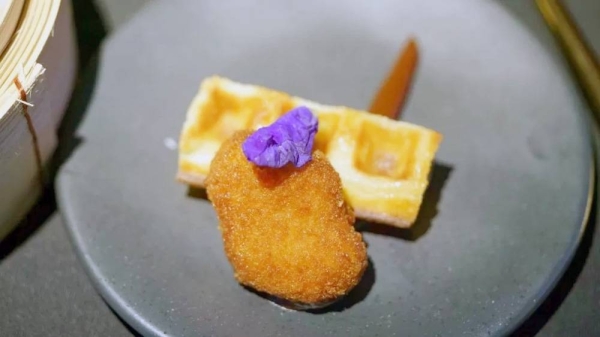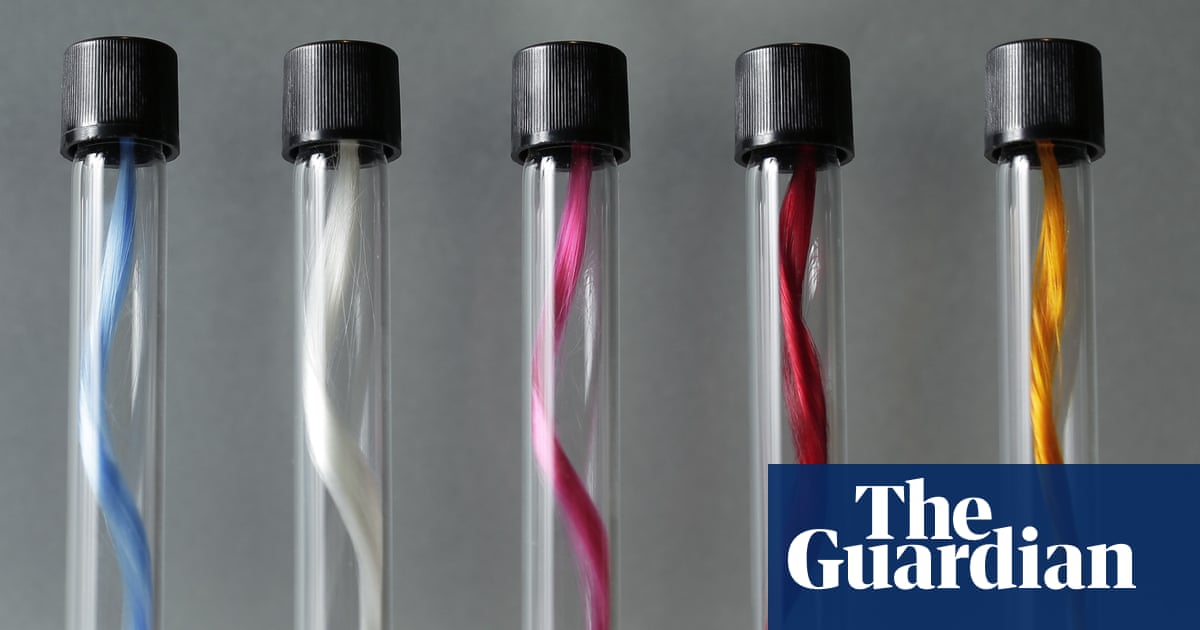
Dogs and cats in the UK are expected to become the first in Europe to be given cultivated meat, a product grown from chicken cells in the laboratory. The pet food promises to alleviate some of the ethical and environmental dilemmas faced by animal lovers. An array of lab-grown dishes, from “cell coffee” to lab-grown oyster meat, could be coming to human plates in the near future.
Meat
Since the world’s first lab-grown burger, with a price tag of £215,000, was unveiled a decade ago there has been a rush of venture capital investment into cultivated meat startups and McKinsey has predicted a global valuation for the industry of $25bn (£19.3bn) by 2030.
Making meat in a lab involves taking a biopsy of animal muscle or fat stem cells and multiplying them indefinitely in a broth of nutrients. The matured cells are then seeded into a 3D scaffold to make a solid piece of meat. The first flurry of products – chicken nuggets and beef steaks – have already been approved in the US, Singapore and Israel, but price remains an issue. A scotch egg with lab-grown meat, created by Fortnum and Mason, is said to have a cost tens of pounds to produce. It is unclear whether many consumers – particularly meat lovers – will pay prices equivalent to a high-end steak for something that tastes closer to a turkey twizzler.
Another challenge has been phasing out the use of foetal bovine serum, blood extracted in a grisly process at the slaughterhouse, which is an ideal nutrient for cells but undermines a central ethical argument for lab-grown meat. There has been progress on this and some of the recently approved products involved lab methods that avoided the use of serum.
“The scale up of cultivated meat technology as a sustainable alternative to current meat production remains a major challenge for the industry,” said Prof David Kaplan, director of a $10m centre for cell-cultivated meat at Tufts University. “There is great optimism on this path, as over the past 10 years the costs for the process have been reduced by orders of magnitude as research and development have progressed.”
Fish
Overfishing is an escalating problem, with a recent report from the UN’s Food and Agriculture Organization estimating there is a 28m-tonne gap between the demand for seafood and sources of supply. Plastic and heavy metal contamination have also become food safety concerns.
A €7m (£6m) EU research project, Fostering European Cellular Agriculture for Sustainable Transition Solutions (Feasts), is aiming to develop cell lines for the production of salmon, sea bass, oysters and other seafood products. A focus is improving efficiency – the equivalent of an elite breeding programme – by identifying cells that efficiently produce muscle and fat and with desired nutritional properties.
“Genetics does matter,” said Dr Frederico Castelo Ferreira, of the University of Lisbon, who is coordinating the EU-funded project and runs a startup developing the first cultivated octopus product. “There are some variants that have more muscle, this is valid not only for cows but for fish.”
Coffee, chocolate and exotic fruits
Coffee and cocoa farming have substantial environmental impacts beyond their carbon footprint, including water use, deforestation and biodiversity loss. Extreme weather conditions have also lead to drastic reductions in supply, with the cost of cocoa doubling in months at the start of this year and one analysis estimating that half of the land used to grow coffee could be unproductive by 2050 due to the climate crisis.
“If you think of coffee or cocoa, there are big challenges even to grow them,” said Dr Emilia Nordlund, of VTT Technical Research Centre of Finland. “If we want to have these products in future, it might be that we’re not able to cultivate them.”
VTT, a state-owned company, is focused on lab-grown plant products, including coffee, cocoa and exotic berries with potential medicinal properties. “These are luxurious products that we don’t need to survive, but it’s nice to have coffee and chocolate,” Nordlund said. “We’re not trying to replace wheat and corn or staple food products.”
The cultivation process is quicker and simpler than for animal cells, taking a week or two rather than several weeks. There is no need to replicate any complex textures with coffee but questions remain about whether one problem is being replaced with another: the cells need to be fed with sugar, presumably grown in a field, and the claimed environmental benefits depend on whether the renewable electricity is used to power the bioreactors.
The lab has succeeded in producing cell coffee, which is harvested as a “uniform cell mass”, dried out to produce a powder and roasted to turn it brown. Nordlund is yet to sample the coffee herself, but a professional sensory panel gave their verdict earlier in the year: “It was not the best coffee, maybe, but there were notes of coffee and the caffeine was there,” she said.
Milk
There is already a massive market for plant-based milk, with the dairy alternatives worth £2.5bn in western Europe in 2020-21, according to Euromonitor. A new wave of companies are looking to expand the alternative dairy market even further, with lab-grown dairy products. Many of these aim to reproduce milk components like whey and casein by inserting the genetic code for various milk proteins into bacteria. The bacteria are fermented and churn out bio-identical versions of these proteins. One Silicon Valley startup, Perfect Day, is using this approach to produce milk, yoghurt, cream cheese, and ice-cream. Other companies are taking things one step further and aiming to cultivate milk-producing cells taken from mammals to turn liquid directly into milk. The Israel-based company Wilk, which has investment from Danone, is producing human and cow milk using this approach.












